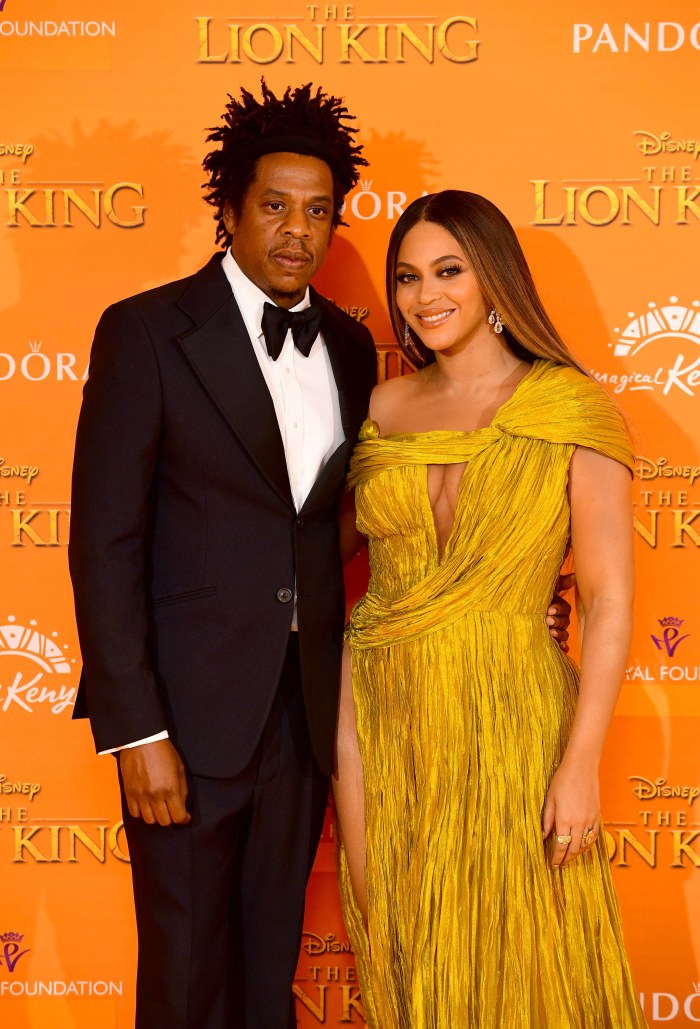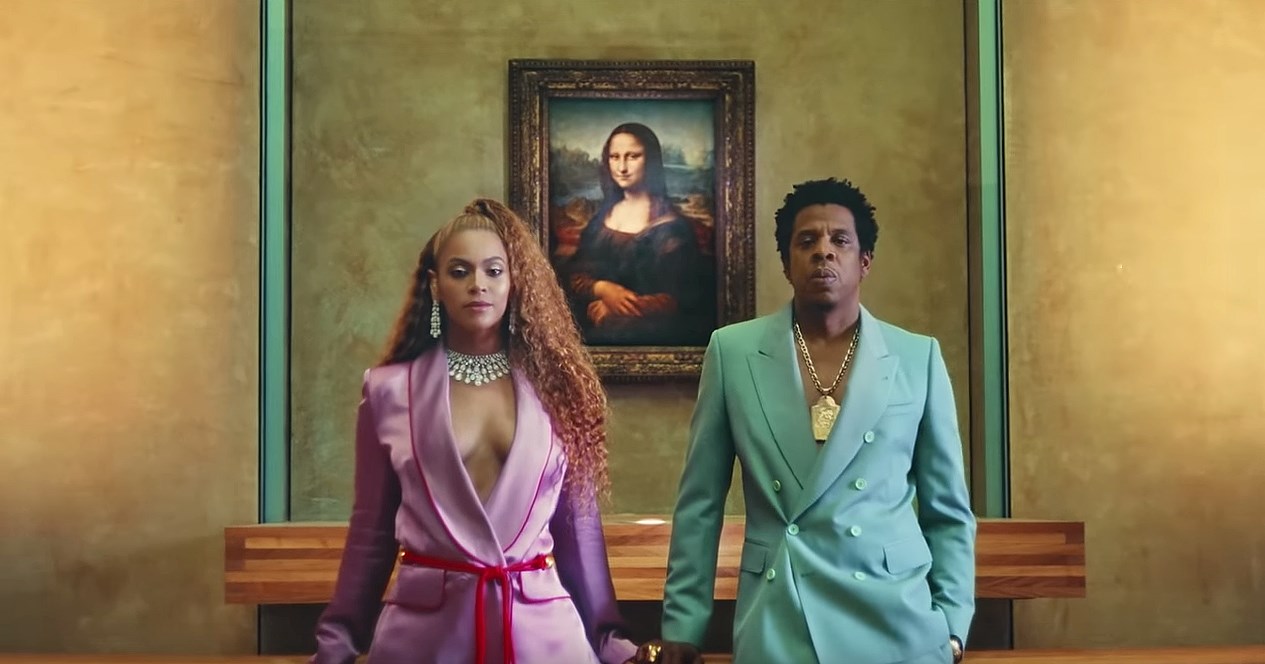
This article is more than
8 year old
In 2006, Beyoncé sang “I can do for you what Martin did for the people” on her single “Upgrade U.” Likening oneself to Martin Luther King Jr. is an audacious move for anyone, especially for a singer who at the time was several years shy of her 30th birthday. But today, 12 years later, Beyoncé’s music has become intertwined with anti-racist protest. The new music video “Apeshit,” part of her and husband Jay-Z's newly released album "Everything Is Love," is part of this trend.
She’s not holding sit-ins at lunch counters or organizing formal marches, but her performances have become increasingly subversive. Indeed, over the past two years Beyoncé has gradually infiltrated and commandeered traditionally white spaces with the most undeniably black performances of her career. She has done this, not to seek inclusion in those spaces, but to highlight the way they have inherently and historically excluded people of color. Her brand of distinct pop culture civil disobedience celebrates both black history and black womanhood, while simultaneously creating discomfort, backlash and hopefully, conversation.
Over the past two years Beyoncé has gradually infiltrated and commandeered traditionally white spaces with the most undeniably black performances of her career.
Critical disobedience links a trifecta of landmark Beyoncé performances, beginning with her performance of “Formation” at Super Bowl 50’s halftime show in 2016. Beyoncé’s invocation of the Black Panther Party and police brutality sparked a conservative backlash and a failed boycott. Later that year, she took to the largely white and conservative Country Music Awards stage with the Dixie Chicks to perform her song “Daddy Lessons.” Though country’s roots — like the roots of much of American music — are black, Beyoncé’s very presence at the predominantly white gathering produced even more racist backlash.
Finally, in April 2018, Beyoncé headlined Coachella (rechristened Beychella for the occasion), another space noted for its overwhelming whiteness and its owners’ conservative politics. The first black woman to headline the festival, Beyoncé’s performance was centered on black culture — forget respectability, forget courting mass appeal.
This past weekend, Beyoncé and Jay-Z premiered a lavish music video for their new song, “Apeshit,” as part of their joint (and surprise) collaboration. As with every Beyoncé creation, there was a lot to analyze. But perhaps most striking was the way the visuals extended the scope of her previous performances. Over the course of a few years, Beyoncé has co-opted and indeed taken over a series of culturally important white spaces, from professional sports arenas to country music to music festivals. In this latest example, she subverts the entire Western notion of art.
The video is shot in the empty Louvre Museum in Paris. But the Carters standing in a museum that is both filled with and symbolic of enormous wealth isn’t itself a radical act. Even posing in front of major works of art —in the process exposing classical art’s overwhelming whiteness — isn’t revolutionary, though certainly significant as representation. But by commandeering the most famous museum in the world for the creation of their art — while the Louvre’s own collection was relegated to the background — the Carters send a very clear message: We will not revere the temple built to celebrate whiteness, nor whiteness itself.
This performative disrespect is quite profound. In her essay “Civil Wars,” poet and activist June Jordan states, “The purpose of polite behavior is never virtuous… The goal of the mannerly is comfort, per se.” “Apeshit” rejects the politeness expected of spectators granted access to such “valuable” art. Besides, value in the Louvre is often tied to colonialism and whiteness anyway; Beyoncé’s disrespect questions that value and its underlying assumptions.
“Apeshit” is therefore meant to provoke discomfort, especially from those who believe the Louvre, its collection, or its associations represent the pinnacle of culture.
But the art parallel serves another subversive purpose. The Carters pose, mostly motionless, in front of some of the Louvre’s most famous pieces. Slyly confrontational with an occasional sneer, they create still life tableaus with their bodies. History has long observed black bodies as objects rather than subjects, most often through lenses of surveillance and/or dehumanization. Beyoncé and Jay-Z gradually add movement. however, drawing attention to that damaging distinction. They refuse to remain motionless objects like the art behind them. They won’t obey.
On the one hand, the line brags about her level of success, but it’s also a phrase colloquially denoting anger and rage. It contains allusions to collective protest.
Echoing her lyrics, Beyoncé in particular ruptures the stillness and fluid choreography of other scenes with faster, seemingly erratic steps. She’s acting out, singing: “Have you ever seen a crowd goin’ apeshit?” On the one hand, the line brags about her level of success, but it’s also a phrase colloquially denoting anger and rage. It contains allusions to collective protest, rising up in concert. The association is coupled with shots of literal disobedience — defiant black men taking a knee while Jay-Z references the NFL.
Going “apeshit” through the Louvre is a grandly disruptive spectacle. There are absolutely things to critique about the Carters’ enthusiastic participation in the system of capitalism, but it would be a mistake to view this takeover of the Louvre as merely a celebration of personal wealth. This is a power couple, in every sense of the word. What they are doing with their power, and their platform, is significant. (Perhaps they even want us to use this video as an opportunity to critique their own exceptional status?)
So, maybe that audacious Beyoncé lyric from “Upgrade U” wasn’t quite as audacious as it seemed. Like Dr. King, Beyoncé offers hope. Not for capitalist success, but in the inherent power of subtle acts of rebellion. We can’t all afford to rent out the Louvre but we can all engage in civil disobedience, regardless of scale. In today's America, breaking the rules is more important than ever, especially as those rules continue to be written and rewritten by a violent, regressive administration.
As the video closes, the Carters turn their backs to the camera. They’re no longer watching; instead they are challenging us to carry their message forward. Obey less, they seem to be saying — go apeshit.
Kevin Allred is a writer, speaker, and educator. He created the college course “Politicizing Beyoncé" in 2010, and his book based on the curriculum is forthcoming in 2019. Read more at www.kevin-allred.com.